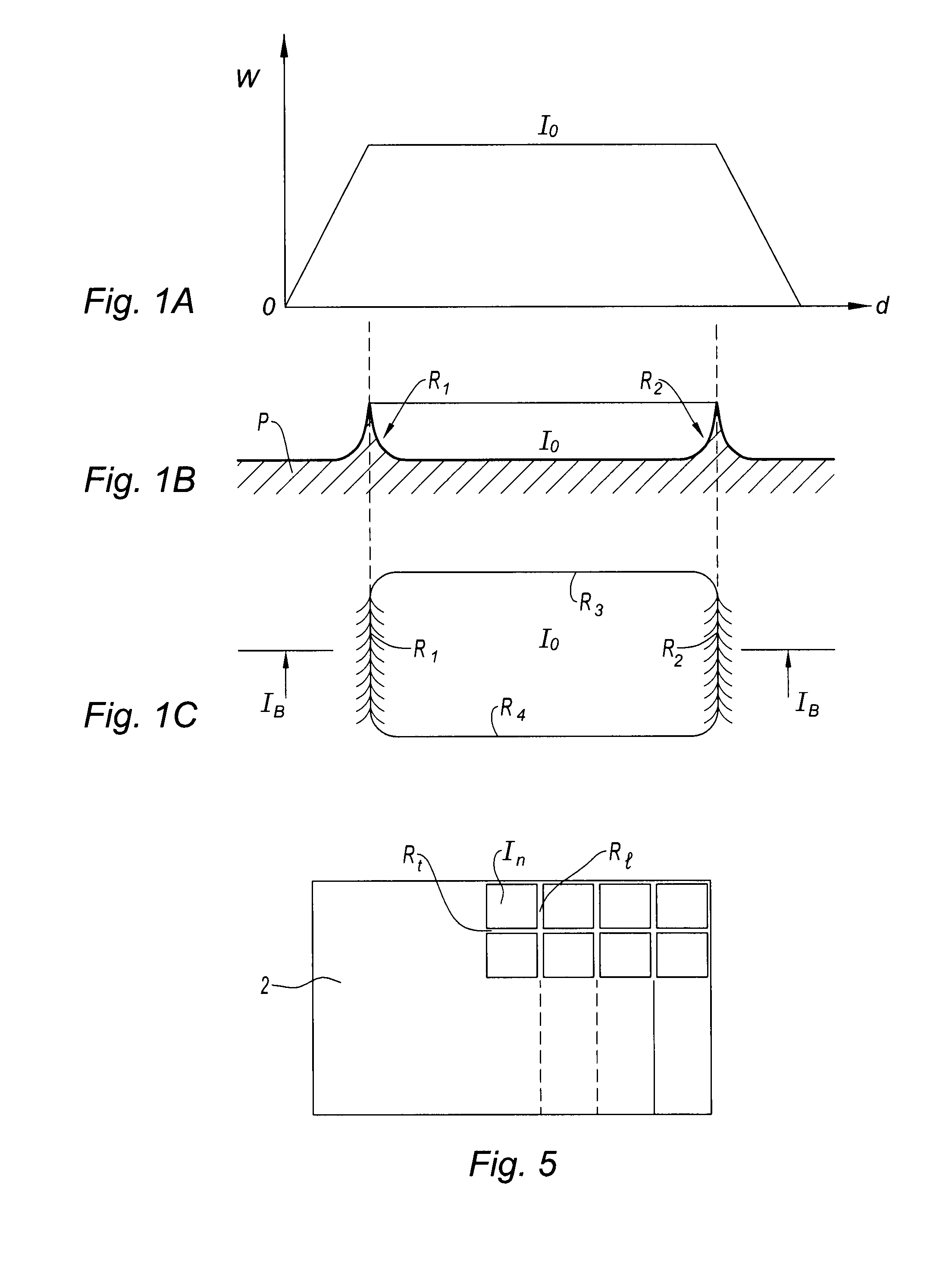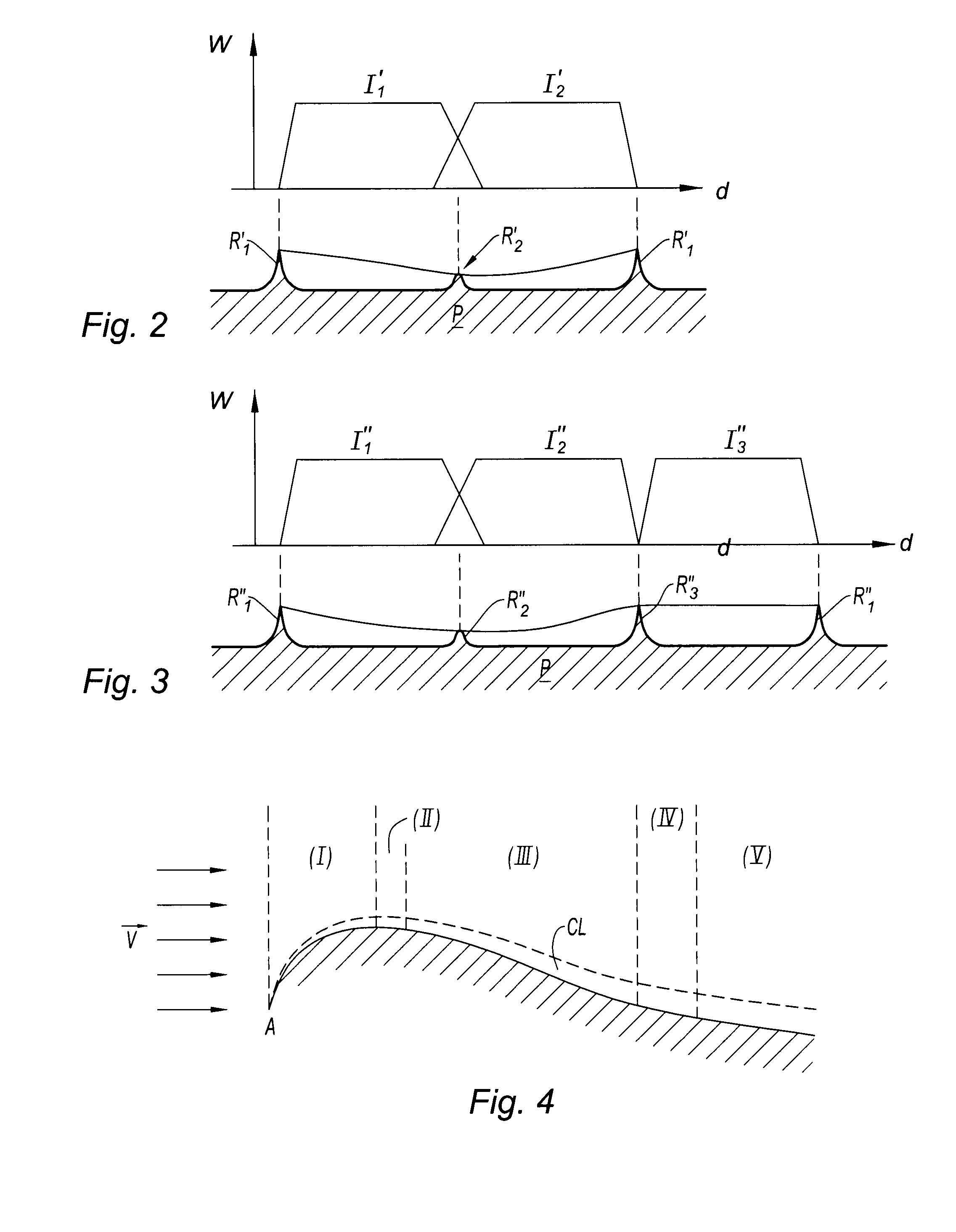Method for forming raised elements disruptive of the boundary layer
a raised element and boundary layer technology, applied in the field of turbines, can solve the problems of undesirable roughness of raised elements, achieve the effects of improving the behavior of the boundary layer, high fluid velocity, and improving mechanical and thermal properties of parts
- Summary
- Abstract
- Description
- Claims
- Application Information
AI Technical Summary
Benefits of technology
Problems solved by technology
Method used
Image
Examples
Embodiment Construction
[0021]FIG. 1 is in three parts, 1A, 1B and 1C. The graph of FIG. 1A illustrates the energy variation W on the x axis applied across the impact, the y axis gives the distance d. It can be seen that the energy is uniform and maximal in the central zone of the impact I0. It diminishes progressively when further from the impact. In diagram 1B, which is a section of the part P in the impact zone I0 and shows its surface state, the material is pushed away to the edges of the impact I0 and forms lateral raised elements R1 and R2, seen in section. The height of the raised elements depends on the energy of the shock and the properties of the substrate receiving the laser shock.
[0022]In a top view, the shape of the zone deformed by the impact depends on that of the beam, in this instance the shape of the impact is rectangular. The deformed zone has the shape of a dish bordered by four low walls or raised elements R1, R2, R3 and R4.
[0023]FIG. 2, like FIG. 1, shows a graph 2A and a section on F...
PUM
| Property | Measurement | Unit |
|---|---|---|
| surface area | aaaaa | aaaaa |
| heights | aaaaa | aaaaa |
| roughness | aaaaa | aaaaa |
Abstract
Description
Claims
Application Information
 Login to View More
Login to View More - R&D
- Intellectual Property
- Life Sciences
- Materials
- Tech Scout
- Unparalleled Data Quality
- Higher Quality Content
- 60% Fewer Hallucinations
Browse by: Latest US Patents, China's latest patents, Technical Efficacy Thesaurus, Application Domain, Technology Topic, Popular Technical Reports.
© 2025 PatSnap. All rights reserved.Legal|Privacy policy|Modern Slavery Act Transparency Statement|Sitemap|About US| Contact US: help@patsnap.com



